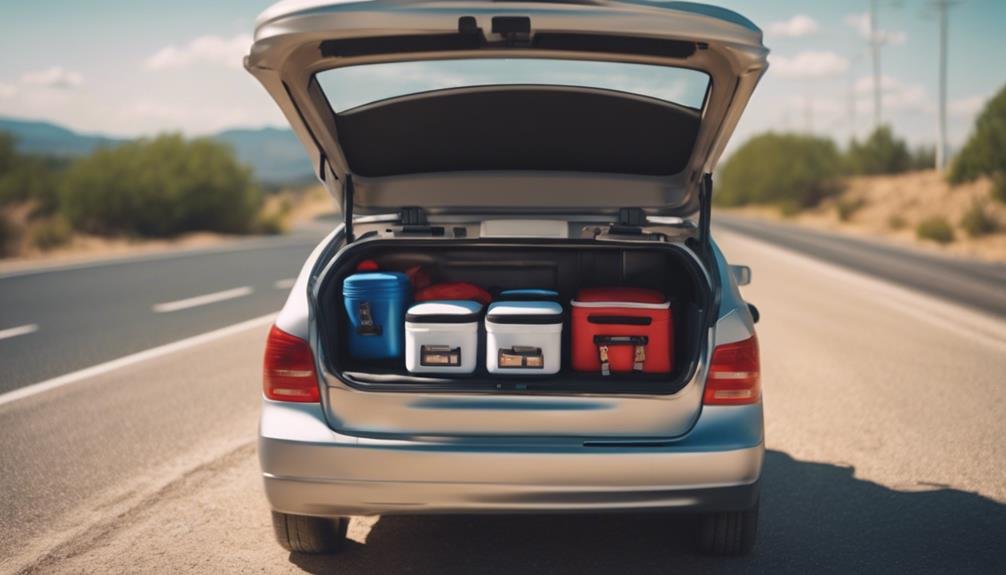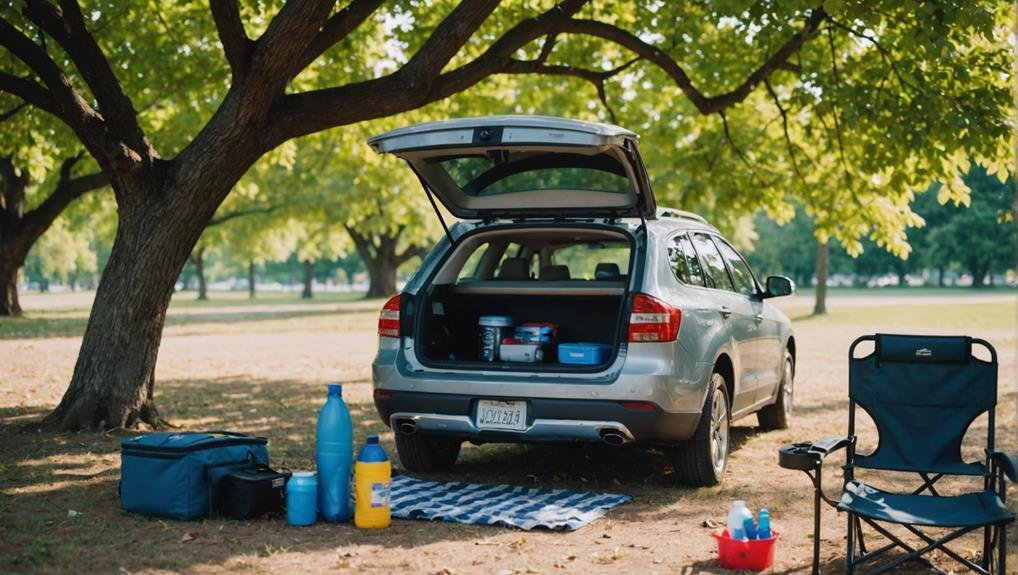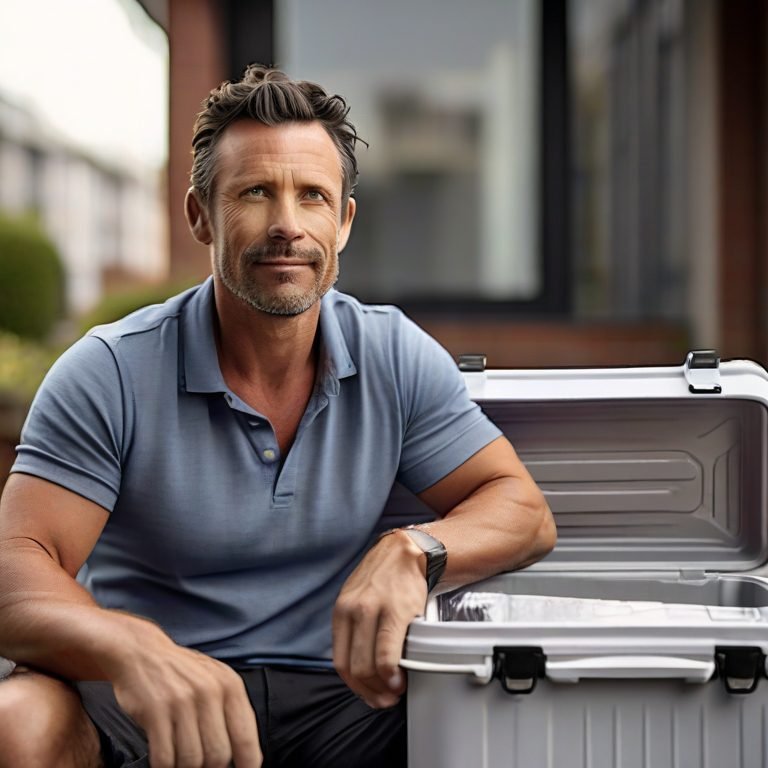When planning your next road trip, one of your top considerations should be how you’ll keep your refreshments cool. Whether you opt for a high-tech electric cooler that plugs into your car’s power outlet or prefer the simplicity of a traditional ice chest, the choices vary widely concerning performance, size, and additional features.
You’ll need to weigh factors like the length of your journey, the amount of space you can dedicate to a cooler, and how often you’ll access your snacks and drinks. Each option has pros and cons, which we’ll explore to help you make the best decision for your travel needs. What will suit you best? Let’s find out.
Key Takeaways
- Opt for Yeti coolers for rugged conditions, offering up to 9 days of food freshness with superior insulation.
- Consider Coleman Extreme coolers for weekend trips, maintaining ice for up to 4 days.
- Choose soft coolers for short, lightweight trips, offering flexibility and ease of transport.
- Evaluate the HUB 50 or 70 hard-sided coolers for robust storage and prolonged ice retention on longer journeys.
- Implement insulation techniques like wrapping the cooler in a sleeping bag to enhance ice retention and efficiency.
Types of Road Trip Coolers
When planning your next road trip, selecting the right cooling solutions to keep your snacks and drinks chilled is essential. Depending on your needs, you have several options to consider.
Soft coolers are your go-to for short-day trips or picnics. They’re lightweight and portable, making them easy to carry from your car to your destination.
However, if you’re gearing up for a long weekend, you might want to consider hard coolers or Yeti coolers, which are known for their durability and superior insulation.
Hard coolers are an excellent choice for longer trips. They typically offer a large capacity for maintaining a good ice-to-food ratio and keeping your items cold for days. Yeti coolers, particularly, are built to withstand rough handling, perfect for adventurous road trips where you might encounter rugged conditions.
Evaluating Cooler Performance
After selecting your preferred cooler type, it’s important to evaluate how well it performs in real-world conditions. Understanding ice retention and food freshness capabilities is essential for your upcoming road trips. Let’s explore how some popular coolers stack up.
The Yeti 45 cooler is a standout. With just one block of ice, it maintains food freshness for up to nine days. This superior ice retention makes it ideal for extended cooling during longer journeys.
On the other hand, the Coleman Extreme cooler, while not as long-lasting as the Yeti, still performs admirably by keeping ice for three nights or four days. It’s perfect for most weekend road trips.
Consider the Amazon cooler if you’re looking for a more budget-friendly option. With a frozen gallon jug, this cooler stays cool for 3-4 days, offering a practical solution without breaking the bank. Similarly, when equipped with block ice, traditional Coleman coolers can keep contents chilled for 2-3 days.
Each cooling solution offers different benefits, depending on your specific road trip needs and budget. By choosing wisely, you’ll ensure your food and drinks stay cool and fresh throughout your adventure.
Cooler Size and Capacity

Selecting the appropriate cooling solution size and capacity is crucial for effectively meeting all your road trip needs. When considering which cooler to bring along, think about the duration of your journey and the space in your vehicle.
Coolers come in various sizes and materials, including hard plastic and soft-sided coolers. Whether packing for a solo adventure or a family getaway, choosing the right cooler can make all the difference. Here are a few pointers to help you decide:
- Assess Your Group Size: A larger cooler, like the Yeti Tundra, might be ideal for traveling with a family or group. It offers ample space for multiple days’ worth of food and drinks.
- Consider Trip Length: A smaller cooler or a YETI Hopper might suffice for shorter trips and be easier to carry.
- Vehicle Space: Make sure the cooler fits comfortably in your vehicle without sacrificing space for other essentials.
- Material Preference: Choose between the durability of hard plastic or the convenience of soft-sided coolers, which are often lighter and more portable.
Choosing the perfect cooler isn’t just about size; it’s about ensuring it’s the ideal companion for your specific road trip scenario.
Essential Cooler Features
Essential features in cooling solutions, like the Overlander System’s integration with partner brands, can greatly enhance your road trip experience. Partnering with brands like MyMedic and Sea To Summit, the system keeps your food and drinks cool and elevates overall functionality, making it indispensable for any road trip.
The choice between hard-sided and soft-sided coolers depends on your specific needs. Hard-sided models, like the HUB 50 or 70, offer robust storage that is ideal for longer trips where you need your items to stay cold for extended periods.
They’re perfect for packing ice packs and keeping everything from perishables to beverages at the right temperature. On the other hand, soft-sided coolers provide lightweight, flexible storage options that are easier to carry and fit into tight spaces, making them essential for shorter, spontaneous trips.
Both cooling solutions are pivotal in maintaining the freshness of your road trip provisions. They ensure that your essential supplies remain cool and well-preserved no matter where your adventure takes you.
With systems like GOAT Cooler’s versatile options, you can tailor your cooling solutions to your road trip’s length and budget, ensuring an excellent travel experience.
Maintaining Cooler Efficiency

To guarantee your cooler performs at its best, manage it properly by maximizing ice retention and efficiency. Efficient cooling keeps food and drinks cool and cold for days. By focusing on a few key practices, you can maintain your cooling solution’s effectiveness, making it a reliable companion for any road trip.
Here are some tips to enhance your cooler’s performance:
- Wrap it up: Use a sleeping bag or additional insulation around your cooler. This extra layer helps maintain low temperatures inside, boosting ice retention considerably.
- Drain wisely: Drain excess water from your cooler regularly, but only when necessary. Keeping some water can help maintain the cold, as long as it doesn’t dilute the ice.
- Keep it covered: Always ensure the cooler is covered. This prevents external heat from compromising the insulation and reduces the ice melting rate.
- Explore storage options: Consider using cold storage facilities to store extra ice or ice packs. This can be perfect when you’re on extended trips and need a continuous supply of fresh ice.
Through these simple yet effective methods, your cooler will remain an efficient tool for keeping your supplies fresh and drinks delightful.
Conclusion
So, when you’re packing for your next road trip, remember to choose the right cooling solutions based on how long you’ll be gone and how many people will be tagging along, whether it’s a soft cooler for short tours or a rugged Yeti for longer hauls, size and performance matter.
Remember key features like durability and insulation to keep your snacks chilled. Properly maintaining your cooler’s efficiency will guarantee that your refreshments stay cold and your trip remains enjoyable. Safe travels!
Explore More Articles:
Stay Cool on Camping Trips with a Portable Cool Box
Top Portable Cool Box for Camping Trips: Your Essential Guide
Why Choose a Portable Cool Box for Outdoors: Tips and Benefits


